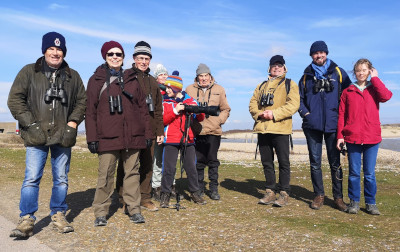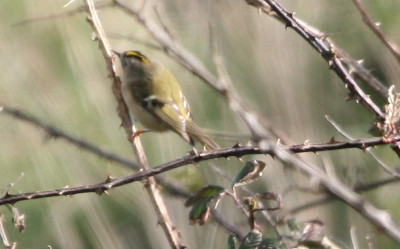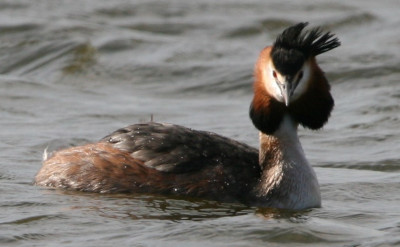 Past Events
Past Events
Walk 09 March 2024

Ten of us met on a morning finer and warmer than expected and soon our attention was drawn to a Wren singing loudly from beside the path. Until we leave the buildings and bushes of the village and holiday park, Wrens are singing all around but usually tucked away in the undergrowth. This one was sitting out in the open, however, giving us the chance to appreciate the rich reddish-brown and fine barring of its plumage, its fine, sharp bill. It’s another of those common birds (right across the UK, right across the Northern Hemisphere, in fact) at which we too rarely take a good look.

Not long afterwards, by the Salt Pool, another Wren shot across the path in front of us and dived into the brambles, quickly followed by another tiny bird, though a green one. It was a Goldcrest, rather out of place there and, while many Goldcrests in the temperate UK stay in one place, others move south for the winter while yet more leave cold continental forests, cross the North Sea and may pass further south. One ringed bird was recovered I the Russian Baltic. So, this one might have been a local wanderer, or returning further north in England, or even facing a longer sea crossing, in and out of the wave troughs. At any rate, it gave the runaround to Xavier as he tried to get a photo.

At this point we got a message from another Friend that he’d seen a Spotted Redshank at the far end of the Salt Pool, an individual that has been around for a few months but is not always easy to find. They breed right across the high arctic and most winter in central Africa, but some save themselves the trouble of several thousand km of flight by staying much further north. A couple of hundred might be scattered across the UK and maybe ten in Sussex. Much paler than Common Redshank, which helpfully kept close for comparison, Spotted Redshank is grey above, rather than brown, and white below, with a clear pale supercilium. It’s more slender, has a distinctly different flight pattern and an easy-to-learn call.

Back at Flat Beach, the high tide roost of waders crammed on the remaining shingle islands comprised twelve species while a similar range of wildfowl were on show, including still large numbers of Pintail. Rather distant were three resting Sandwich Terns, having just arrived from wintering areas off W Africa. A few have taken to staying in W Sussex during the colder months but have yet to favour this area. How many remain to breed this year at Rye Harbour remains to be seen.
At the start of the walk each person had predicted how many species we might find. The highest guess was 50 but we ended up with 63, on a lovely morning when star of the show was the Spotted Redshank, a new bird for everyone.
(Bird photos – Xavier Marrs)